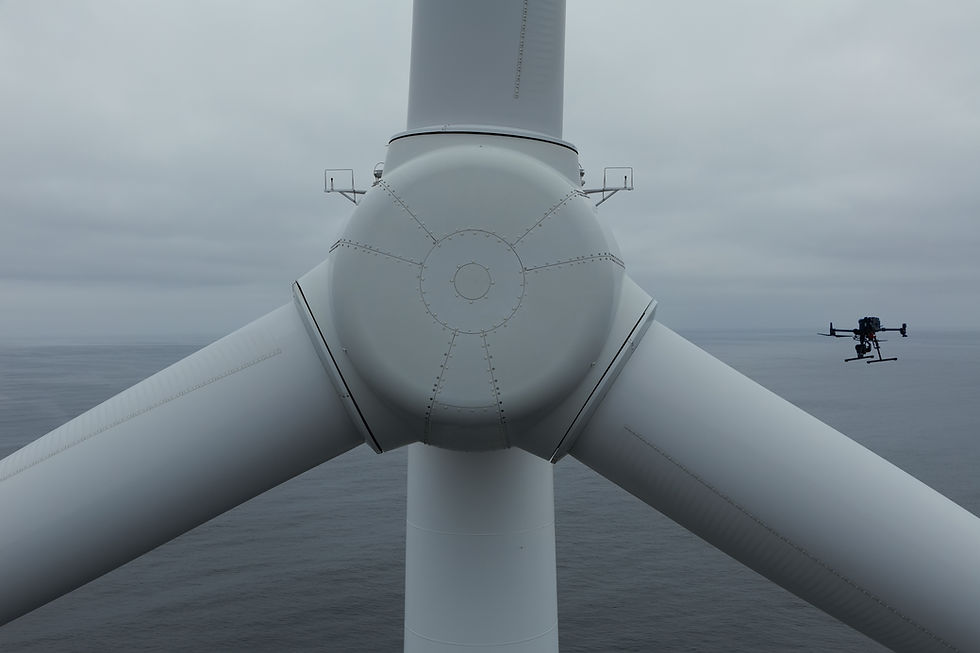Can Robotics support safer and more productive wind assets?
- Innovair
- Jan 6, 2023
- 2 min read
Author: Andrew Johnston
Wind power's future development represents a significant opportunity to provide low-carbon energy all over the world. Energy asset operators are working to improve turbine uptime and productivity while reducing or eliminating safety risks and addressing maintenance and repair costs.
More than 80% of the cost of offshore wind operations and maintenance is a function of accessibility - Crown Estate

+ How are robotics being used?
Existing solutions are already saving the wind industry money by improving efficiency in routine and non-routine inspections. Drones and robots can help operators and owners collect data to assess the current state and operational performance of wind farms while also providing information for maintenance decisions and reducing downtime and costs. All of these factors contribute to a wind farm's and its associated assets' operational lifespan being extended.
These solutions can be applied to wind assets throughout their entire lifecycle, including installation, end-of-warranty inspections, in-service, and decommissioning. Some RAS applications in the wind industry are detailed below.
Blade Inspection
Performing blade inspections with autonomous drones, which use onboard LiDAR sensors to navigate around blade and turbine components and capture accurate and high-quality repeatable data sets for each blade inspected. This data can be consolidated on cloud-based portals, allowing stakeholders to easily access and collaborate with their blade assets and repair teams.

Splash Zone
Innovations like magnetic crawlers and climbing robots can be used in subsea as well as dry environments to support operations that are quicker, more effective, and safer. These systems can be remotely controlled, require little in the way of resources or platform space, and enable personnel to work safely without the need for a support vessel.

Subsea Inspection
The next generation of subsea hybrid autonomous underwater vehicles (HUAVs) are already making a splash in the energy sector. These intelligent vehicles operate from docking stations and carry out various routine and non-routine tasks underwater.

+ Summary: The Future is remote
The UK is a major player in onshore wind and currently leads the world in offshore wind capacity installed. The widespread use of robotic and autonomous systems (RAS) technology has already and will continue to have a positive impact on the wind industry.
RAS is an area of innovation that is here to stay because operators are always looking for new ways to improve performance and cut down on the amount of time technicians spend offshore. Robotic systems also play a crucial role in reducing risks to personnel health and safety, completing labour-intensive inspection tasks in challenging environments. Throughout the lifecycle of wind farms and their assets, RAS will continue to contribute to safer assets and improved performance.
WANT TO READ MORE?

A message from the author:
"Thanks for taking the time to read this blog on robotic inspection. Reliable, innovative and experienced, we hope to become your go-to team for trusted inspection advice, support & solutions.
Reach out and connect with me on LinkedIn"
Andrew Johnston BEng, MInstNDT LEP
Inspection Director








Comments